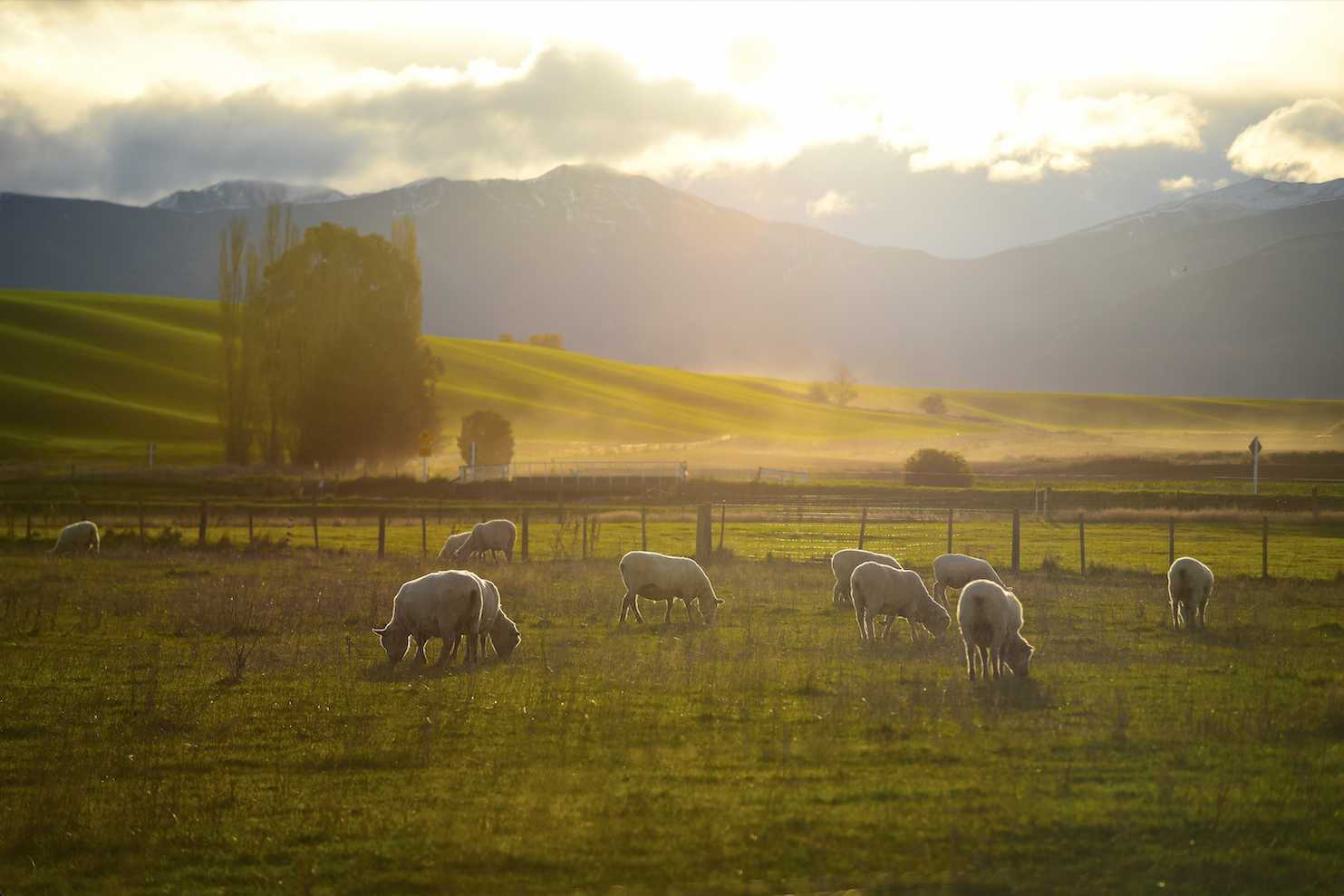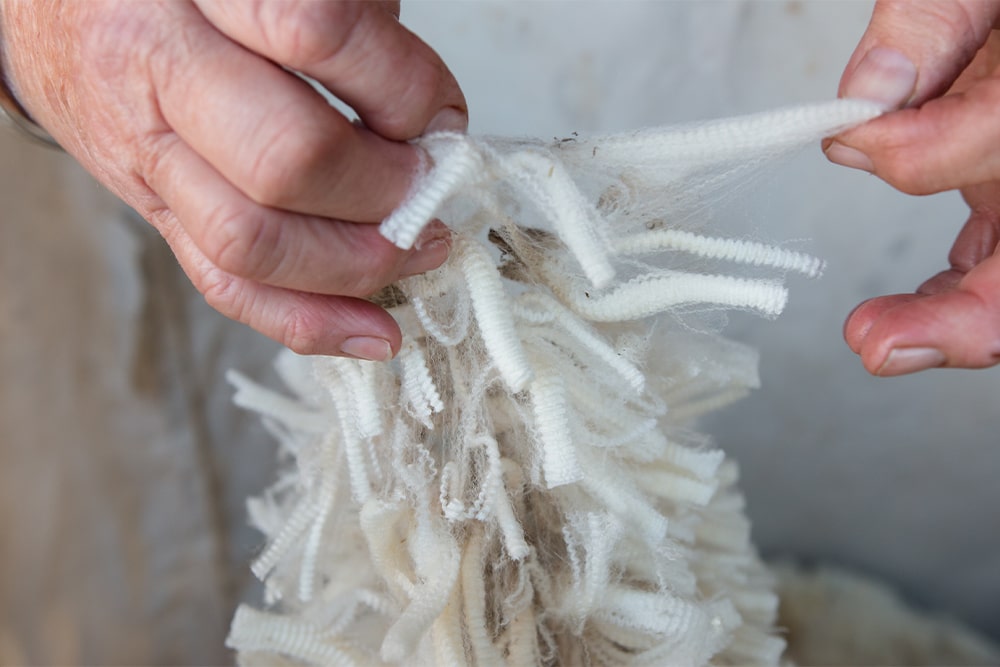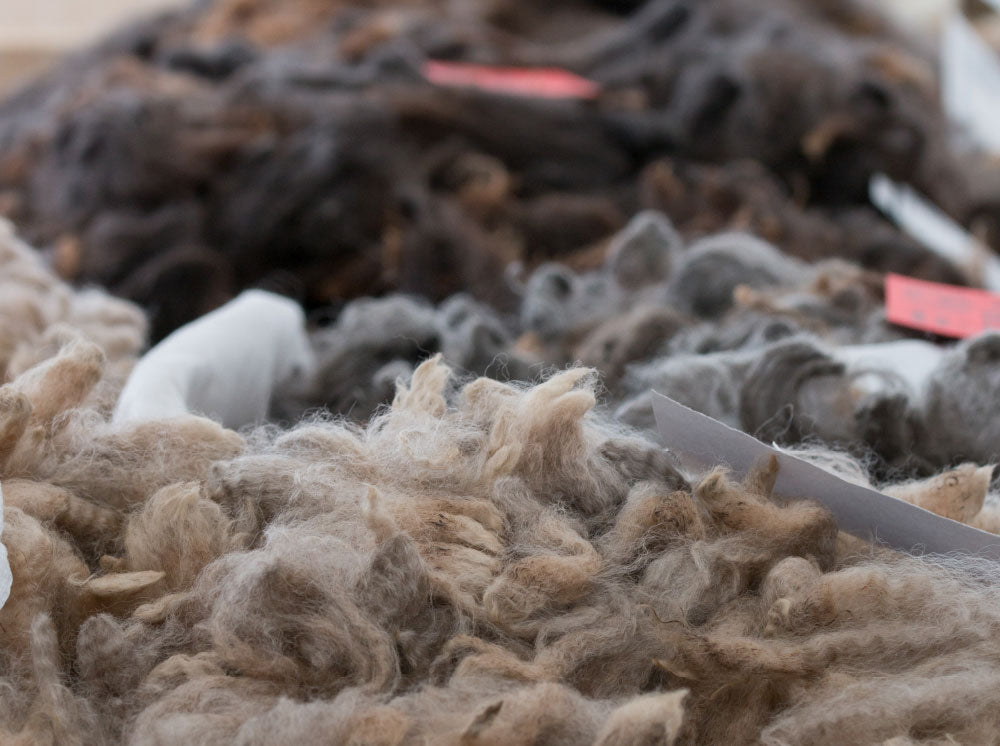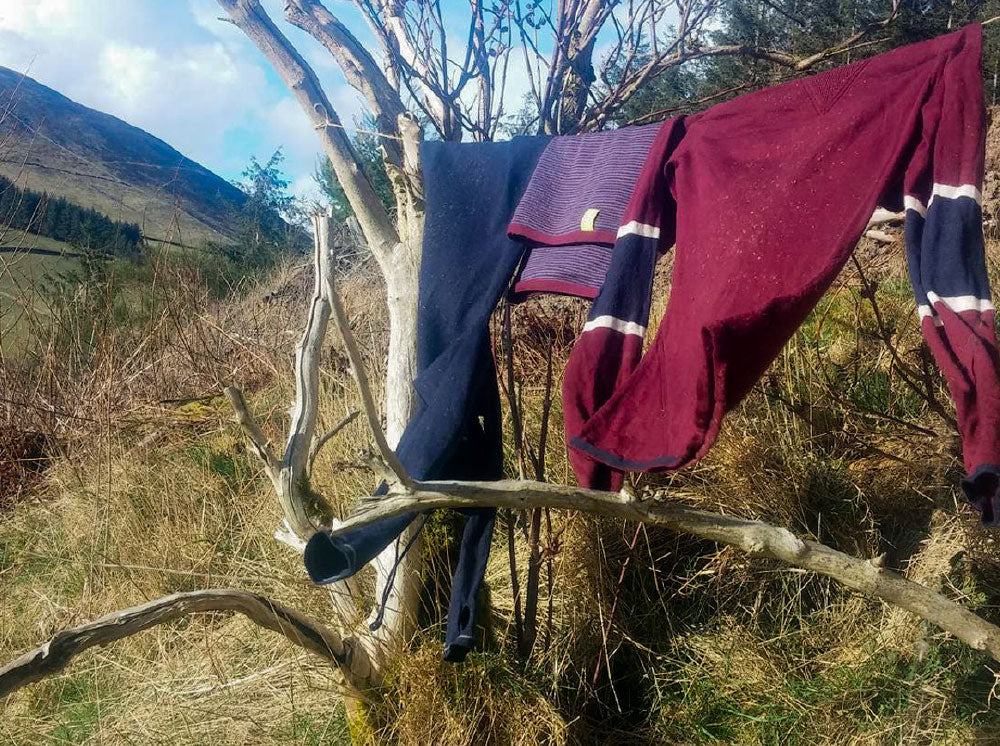
All About Merino Wool
We think of merino wool as a real wonder fibre and its a perfect raw material for use in outdoor clothing. It has so many fantastic characteristics and what’s more, it’s a naturally occurring resource with a long lifespan and lots of recycling options.

What is Merino Wool?
Merino wool is wool spun from the fleece of Merino sheep. First native to Spain, Merino sheep can now be found in New Zealand, Australia, Argentina, Chile, Uruguay and South Africa.
Our Merino is ethically sourced, non-mulesed from Australia where we can ensure the highest ethical and sustainability standards are being met.
These hardy sheep are reared in environments with extreme weather conditions, this has led to the sheeps fleece evolving to adapt to those extremities – giving the fibre a range of properties such as temperature regulation, that ensure its survival in these harsh conditions.
As with other types of wool, Merino is made through the careful treatment and processing of sheep wool. First, the sheep are sheared, and the resulting fibre is cleaned, sorted, graded and carded. The wool is then spun and loaded onto reels ready for dying. Once dyed, the fibre is ready to be used to develop into woven or knitted textiles.

Merino Fibres
Wool fibres can differ considerably depending on the animal, the breed and where it has been reared.
The structural varieties of wool fibres are measured in microns. A micron is the diameter of one wool fibre and generally, the lower the micron count, the softer the wool. Lambswool typically has a micron count of no more than 25 and Merino ranges between 15 and 20. A synthetic fibre may be up to 30 microns.
As well as a low micron count, Merino fibres have a good crimp (coiled texture). This allows the resulting fabric to be soft and springy and works to trap air, giving it insulating properties. Merino wool can be fine, superfine and ultra-fine, depending on how low the micron count is. Ultra-fine wool is best for base garments, while the slightly thicker fine variety is great for mid-layers or outer layers. At FINDRA we’ve created three clothing weights to reflect the differences in fibre, find out more in our Merino weight guide

Non-Mulesed Australian Merino Wool
We are passionate about sourcing raw materials that are traceable and ethical.
All merino used in our 3D Seamless Knit Collections is sourced from farmers in Australia. The raw material is then spun in Italy to create the highest quality fine merino yarn.
Since 2015 our yarn suppliers have been collaborating with the Beaufront estate located in Tasmania, well known not only for its endless pastures, whose biodiversity is promoted by verifying the quality of the land and plants so that their properties meet the highest standards, but also for the commitment to pursue animal welfare.
This is confirmed by its RWS and mulesing-free wool certifications: professional shearers ensure that all phases of wool harvesting are conducted in an ethical manner, guaranteeing a habitat for the sheep characterised by total absence of stress.
What makes merino wool sustainable?
-

Biodegradable
Merino wool will break down into its component parts at the end of its life. It can even be composted!
-

From a renewable source
Created from the fleece of Merino sheep, Merino wool is a sustainable and renewable fibre.
-

A durable fibre
Merino wool is naturally strong and long-lasting. Well-made Merino clothing is designed to have an extended lifespan.
-

Easy to care for
Merino needs washing infrequently and uses less water over its lifecycle. It also has the advantage of not releasing microplastics when washed. All these factors help to make Merino wool a more ethical choice than synthetic alternatives. Choose Merino and feel good in all senses of the word.
-

Low Carbon Impact
Sheep consume organic carbon by eating plants, and store this in their fleece. Fifty per cent of a fleece's weight is pure organic carbon stored in a durable, wearable form.
-

It can be recycled
When Merino wool garments come to the end of their lifespan (this is likely to take a while!), they can be easily recycled in a couple of ways. You can either take them to your local recycling facility or you can compost them.
How to Look After Merino Wool
Take care of your Merino and it will take care of you.

Washing
Merino wool can be washed by hand or in your machine, as long as you put it to a cool setting. Wash at 30°C on a delicate wash, wool wash or short cycle with similar colours.
Turn your Merino clothing inside out to prevent bobbling and use a mild detergent. If you’re using a powder, dissolve it first so it doesn’t stick to the fibres and cause holes.
Merino, like all wools, is heavier wet than dry. This means drying it on a hanger or line can cause it to stretch and lose shape. Dry it on a flat surface, preferably a towel, and reshape your garment while it’s still damp.

Airing Out
One of the amazing things about Merino wool is the fact that it is naturally odour resistant. This means you can wear Merino many times between washes. When you do notice that your clothing is starting to pick up a smell, you can air it outdoors (or beside an open window if you don’t have an outdoor space) to help refresh the wool.
We also provide a merino care card with all of your purchases to help you look after and love your merino.
What are the benefits of Merino wool?
-
It’s soft and gentle
The ultrafine fibres mean it’s a dream to wear and feels great against your skin
-
It’s breathable
Nice and natural, Merino breathes and absorbs moisture better than any other fibre
-
It regulates temperature
A high wicking factor means it keeps you cool when it’s hot and warm when it’s cool.
-
It’s odour-resistant
Unlike synthetic fabrics, Merino doesn’t pick up the smell of perspiration
-
It’s recyclable
Made from all natural materials, Merino wool can be recycled at the end of its life
-
It has a great weight to warmth ratio
The tightly packed, fine fibres mean even lightweight Merino offers great warmth
-
It’s easy to look after
Merino wool can be refreshed by hanging outside or washed on a cool setting
-
It’s a renewable resource
Created by the spinning of wool from Merino sheep, it’s a sustainable option

Merino wool FAQs
What is Merino wool?
Merino wool is the wool of the Merino sheep. It is a superfine and lightweight fibre with lots of great characteristics.
Where does Merino wool come from?
Merino sheep are mainly reared in New Zealand, Australia, Argentina, Chile, Uruguay and South Africa. At FINDRA, we ethically source our wool from Australia.
Is Merino wool ethical?
Merino wool is ethical as long as the farmers rearing Merino sheep and the supply chain using the wool are all committed to it being that way.
What is mulesing?
Mulesing is a surgical procedure some commercial sheep farmers use to make it easier to keep animals free of blowflies. However, it is a painful procedure that is not necessary. At FINDRA, we always use mulesing-free Merino wool.
Is Merino wool good for the environment?
Merino has lots of environmental advantages, it is a natural and renewable resource, and is fully recyclable and even compostable.
Is Merino wool vegan?
Merino wool is gathered by shearing sheep from their fleece. This is a pain-free process and shearing is important for the general well-being of the animal, as it ensures their comfort.
Is Merino wool better than synthetic?
Not only is it recyclable and better for the environment, Merino wool has odour resistant properties and needs washing less frequently than synthetic wools.
There are lots of compelling reasons for going natural, starting with the feel, shape and integrity of the garment. Merino wool has lots of amazing characteristics, including softness, durability and a high wicking ability.
Merino wool is breathable and allows sweat to evaporate. Synthetic wools are hydrophobic, so they don’t absorb damp. They dry quickly, but don’t have Merino’s natural odour-resistance. Merino is also naturally flame-resistant, unlike petroleum based synthetics.
How is Merino wool odour resistant?
The structure of Merino’s natural fibres help prevent the growth of smell-causing bacteria. If bacteria is present, the protein molecules naturally occurring in Merino fibres (keratin) break the bacteria down.
How does Merino wool keep you warm in winter and cool in summer?
The structure of Merino wool is what makes it so good at regulating temperature. It’s superfine and spiralled, perfect for trapping air. It also absorbs sweat and moisture and lets it evaporate away from the skin. Merino fibres have a good crimp (coiled texture). This allows the resulting fabric to be soft and springy to the touch and works to trap air, giving it insulating properties. Because the fibre itself is so long and soft, it is very gentle and kind to skin.
Can I really wear Merino in the summer months?
Yes! In fact, Merino wool clothing is great in the summer, as it helps evaporate sweat and is also odour resistant – ideal for summer months.
Why does Merino wool make a good base layer?
Not only is Merino wool incredibly soft and gentle on your skin, it’s lightweight and has high moisture wicking capabilities – keeping you cooler and more comfortable.
Why does Merino wool not attract the smell of sweat?
Unlike synthetic wools that can pick up unpleasant sweat smells easily, Merino wool can absorb large amounts of water vapour. This gives sweat and unpleasant smells less time to build up. Its unique fibres also lock away smells, only releasing them when washed.
What activities can I wear Merino wool for?
We chose Merino wool precisely for the fact it can accompany you on any adventure. From running round the park to picnicking on the beach or hiking through the Alps.
How do I care for Merino wool clothing?
Merino wool needs to be washed less frequently than synthetic fabrics. Air it to freshen up between wears and when it is time to wash, use a cool cycle and dry flat.
Is Merino softer than lambswool?
Lambswool can be very soft but, unlike Merino, it can be taken from any breed of sheep. That means its micron count can vary wildly. With Merino, you know you’re getting a low count and very soft wool.
Why does FINDRA Merino wool come from Australia?
We source our Merino wool from Australia, where there are lots of excellent farmers to choose from. There are no Merino wool farms in the UK because the weather conditions are not suitable for breeding Merino sheep.
Why does FINDRA insist on Woolmark accreditation?
It is important to us to source our wool from an ethical supply chain recognised by Woolmark. The Woolmark is an accredited standard that supports the ‘sheep to shop’ ethos and ensures the raw material meets exacting standards, in the production of natural, renewable and biodegradable wool.
Is Merino wool itchy near to the skin?
No. Merino wool is made from very fine fibres, meaning it is nice and soft and not itchy at all. Our seamless clothing line is also created without seams, for an even comfier fit.
What is a Merino wool blend?
Sometimes Merino wool fibres are blended with other wools or synthetic wool fibres to create a fabric with different properties. How the new fabric behaves depends on the blend.
Why is Merino wool clothing more expensive than synthetic outdoor clothing?
Merino wool is more expensive because it’s a natural and renewable resource, especially when ethically sourced. The extra cost is typically balanced out by Merino’s durability, low cost of care and the lifespan of the product.
Is Merino wool difficult to look after?
Not at all. In fact, Merino wool is easy to look after. It needs to be washed less often than other fabrics and can be aired when it needs freshening up. It can also be machine washed on a cool setting.
Can I wash Merino wool on a standard wash?
As long as you normally wash your clothes on a cool setting, you can pop your Merino wool in alongside it. Don’t tumble dry, though. Merino is best dried flat, so it can keep its shape.
Will Merino wool shrink in the wash?
Not if you wash it on a cool setting and skip the tumble drier. Ideally, use a short, cool wash of no more than 30 degrees.
Is Merino wool bulky?
No. In fact, because Merino wool is made up from a very fine fibre, it can be woven or knitted into lightweight clothes that are perfect for layering.
What weight of Merino wool does FINDRA use for clothing?
Merino has a micron count between 15 and 20 (a micron is the diameter of one wool fibre and generally, the lower the micron count, the softer the wool).
Merino wool can be fine, superfine and ultra-fine, depending on how low the micron count is. Ultra-fine wool is best for base garments, while the slightly thicker fine variety is great for mid-layers or outer layers. At FINDRA we’ve created three clothing weights to reflect the differences in fibre, find out more in our Merino weight guide.







